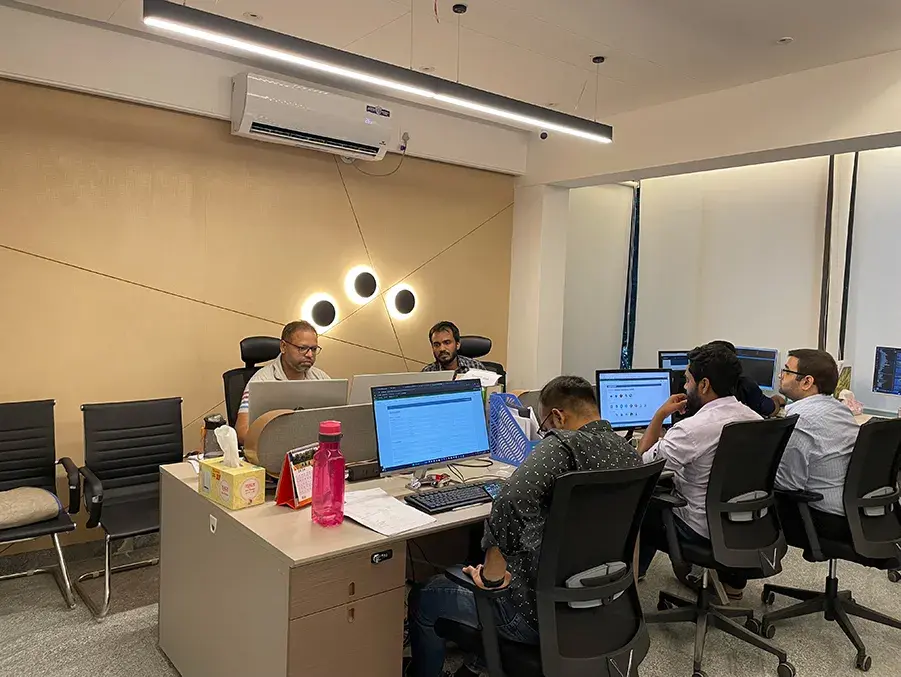
Top Web Development Trends You Need to Know for 2025
The digital landscape is continuously evolving, with web development at its core. Staying ahead of emerging trends is vital as businesses compete to provide superior user experiences. The year 2025 is set to bring transformative changes, powered by advancements in technology and shifting user expectations. This blog explores the top web development trends that will dominate 2025, helping businesses future-proof their online presence.
1. AI and Machine Learning in Web Development
Artificial Intelligence (AI) and Machine Learning (ML) are no longer just buzzwords—they’re reshaping web development. These technologies enable websites to deliver hyper-personalized experiences, automate tasks, and improve efficiency.
- Personalized User Experiences: AI algorithms analyze user behavior to offer personalized recommendations and dynamic content. For example, e-commerce sites use AI to suggest products based on browsing history.
- Smart Web Design: AI-powered design tools like Adobe Sensei and Wix ADI can create websites in minutes, allowing developers to focus on customization and functionality.
- Enhanced Search Capabilities: AI improves search functionality with features like semantic search and visual search, making content discovery more intuitive.
In 2025, expect AI to become even more integrated into web development, enabling smarter, more efficient solutions.
2. Progressive Web Apps (PWAs)
Progressive Web Apps (PWAs) are revolutionizing the way we interact with websites. Combining the best of web and mobile apps, PWAs offer fast, reliable, and engaging user experiences.
- Offline Functionality: PWAs work offline or on low-quality networks by caching data, ensuring uninterrupted access.
- Fast Load Times: Built with performance in mind, PWAs load instantly, even on slow connections.
- Cross-Platform Compatibility: PWAs work seamlessly across devices and platforms, eliminating the need for separate app development.
Leading companies like Twitter, Starbucks, and Pinterest have already embraced PWAs, and their adoption is expected to grow significantly in 2025.
3. Voice Search Optimization
With the rise of smart speakers and voice assistants, voice search is reshaping how users interact with the web. By 2025, it’s estimated that over half of online searches will be voice-driven.
- Natural Language Processing (NLP): Web developers must optimize websites to understand conversational queries, ensuring content ranks high in voice search results.
- SEO Best Practices: Structured data, long-tail keywords, and a focus on answering questions directly will be critical for voice search optimization.
- Accessibility: Voice-enabled navigation improves accessibility, creating more inclusive web experiences.
Businesses that adapt to voice search early will gain a competitive edge in an increasingly voice-first world.
4. Serverless Architecture
Serverless architecture is changing how developers build and deploy applications. By leveraging cloud providers, developers can focus on coding without worrying about server management.
- Cost Efficiency: Pay-as-you-go models reduce operational costs by eliminating the need for physical servers.
- Scalability: Serverless platforms automatically scale to handle varying traffic loads, ensuring consistent performance.
- Faster Deployment: Developers can deploy updates quickly, improving time-to-market.
Popular platforms like AWS Lambda, Microsoft Azure Functions, and Google Cloud Functions are driving the adoption of serverless architecture, which is set to grow exponentially in 2025.
5. Motion UI and Microinteractions
Web design is no longer just about aesthetics; it’s about creating memorable experiences. Motion UI and micro-interactions play a crucial role in engaging users and guiding them through a website.
- Dynamic Content: Motion UI brings content to life with animations, transitions, and effects.
- Microinteractions: Small design elements like hover effects, button animations, and loading spinners enhance usability and interactivity.
- Improved Engagement: These visual cues help users intuitively understand actions and processes.
As users demand more immersive experiences, motion UI will become a standard in web design by 2025.
6. Web3 and Decentralized Applications
Web3 represents the next generation of the internet, emphasizing decentralization, transparency, and user empowerment. Built on blockchain technology, Web3 applications (DApps) are transforming industries.
- Decentralized Finance (DeFi): Web3 enables secure and transparent financial transactions without intermediaries.
- Enhanced Privacy: Users gain greater control over their data, addressing growing privacy concerns.
- Smart Contracts: Automated contracts execute predefined actions, streamlining processes in sectors like real estate and supply chain.
While still in its infancy, Web3’s potential is immense, and 2025 will likely see wider adoption of decentralized applications.
7. Cybersecurity Enhancements
With cyber threats on the rise, web security is a top priority. In 2025, advancements in cybersecurity will focus on proactive measures and smarter solutions.
- AI-Driven Security: AI tools can detect and respond to threats in real time, preventing data breaches.
- Zero-Trust Architecture: This approach assumes no user or device can be trusted by default, adding multiple layers of security.
- Secure Development Practices: Developers will prioritize secure coding practices, incorporating features like encryption and multi-factor authentication.
Investing in cybersecurity not only protects businesses but also builds trust with users.
8. Sustainability in Web Development
As environmental concerns grow, sustainability is becoming a key focus in web development. Building eco-friendly websites aligns with global efforts to combat climate change.
- Energy Efficiency: Optimizing website performance reduces energy consumption, benefiting both users and the environment.
- Green Hosting: Hosting providers that use renewable energy are gaining popularity.
- Minimalist Design: Simplified designs reduce data transfer, lowering carbon footprints.
Sustainability isn’t just a trend—it’s a responsibility. Businesses adopting green practices will stand out as socially conscious brands.
Conclusion
The web development landscape in 2025 will be shaped by innovation, user-centricity, and sustainability. From AI-driven personalization to decentralized applications and eco-friendly practices, these trends offer businesses exciting opportunities to enhance their online presence. By embracing these advancements, you can stay ahead of the curve and deliver exceptional digital experiences.
Ready to future-proof your website? Let Ambala IT guide you through these emerging trends and transform your digital strategy for 2025 and beyond.








